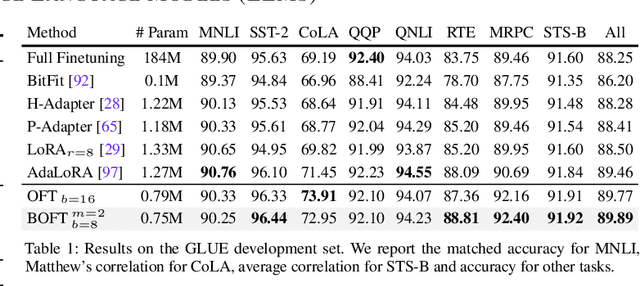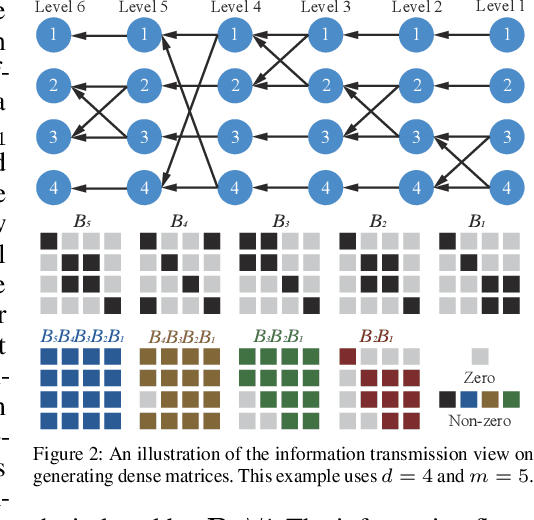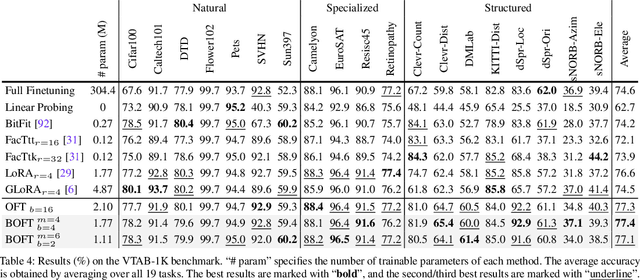Longhui Yu
Kimina-Prover Preview: Towards Large Formal Reasoning Models with Reinforcement Learning
Apr 15, 2025Abstract:We introduce Kimina-Prover Preview, a large language model that pioneers a novel reasoning-driven exploration paradigm for formal theorem proving, as showcased in this preview release. Trained with a large-scale reinforcement learning pipeline from Qwen2.5-72B, Kimina-Prover demonstrates strong performance in Lean 4 proof generation by employing a structured reasoning pattern we term \textit{formal reasoning pattern}. This approach allows the model to emulate human problem-solving strategies in Lean, iteratively generating and refining proof steps. Kimina-Prover sets a new state-of-the-art on the miniF2F benchmark, reaching 80.7% with pass@8192. Beyond improved benchmark performance, our work yields several key insights: (1) Kimina-Prover exhibits high sample efficiency, delivering strong results even with minimal sampling (pass@1) and scaling effectively with computational budget, stemming from its unique reasoning pattern and RL training; (2) we demonstrate clear performance scaling with model size, a trend previously unobserved for neural theorem provers in formal mathematics; (3) the learned reasoning style, distinct from traditional search algorithms, shows potential to bridge the gap between formal verification and informal mathematical intuition. We open source distilled versions with 1.5B and 7B parameters of Kimina-Prover
Kimi-VL Technical Report
Apr 10, 2025Abstract:We present Kimi-VL, an efficient open-source Mixture-of-Experts (MoE) vision-language model (VLM) that offers advanced multimodal reasoning, long-context understanding, and strong agent capabilities - all while activating only 2.8B parameters in its language decoder (Kimi-VL-A3B). Kimi-VL demonstrates strong performance across challenging domains: as a general-purpose VLM, Kimi-VL excels in multi-turn agent tasks (e.g., OSWorld), matching flagship models. Furthermore, it exhibits remarkable capabilities across diverse challenging vision language tasks, including college-level image and video comprehension, OCR, mathematical reasoning, and multi-image understanding. In comparative evaluations, it effectively competes with cutting-edge efficient VLMs such as GPT-4o-mini, Qwen2.5-VL-7B, and Gemma-3-12B-IT, while surpassing GPT-4o in several key domains. Kimi-VL also advances in processing long contexts and perceiving clearly. With a 128K extended context window, Kimi-VL can process diverse long inputs, achieving impressive scores of 64.5 on LongVideoBench and 35.1 on MMLongBench-Doc. Its native-resolution vision encoder, MoonViT, further allows it to see and understand ultra-high-resolution visual inputs, achieving 83.2 on InfoVQA and 34.5 on ScreenSpot-Pro, while maintaining lower computational cost for common tasks. Building upon Kimi-VL, we introduce an advanced long-thinking variant: Kimi-VL-Thinking. Developed through long chain-of-thought (CoT) supervised fine-tuning (SFT) and reinforcement learning (RL), this model exhibits strong long-horizon reasoning capabilities. It achieves scores of 61.7 on MMMU, 36.8 on MathVision, and 71.3 on MathVista while maintaining the compact 2.8B activated LLM parameters, setting a new standard for efficient multimodal thinking models. Code and models are publicly accessible at https://github.com/MoonshotAI/Kimi-VL.
$\texttt{PatentAgent}$: Intelligent Agent for Automated Pharmaceutical Patent Analysis
Oct 25, 2024Abstract:Pharmaceutical patents play a vital role in biochemical industries, especially in drug discovery, providing researchers with unique early access to data, experimental results, and research insights. With the advancement of machine learning, patent analysis has evolved from manual labor to tasks assisted by automatic tools. However, there still lacks an unified agent that assists every aspect of patent analysis, from patent reading to core chemical identification. Leveraging the capabilities of Large Language Models (LLMs) to understand requests and follow instructions, we introduce the $\textbf{first}$ intelligent agent in this domain, $\texttt{PatentAgent}$, poised to advance and potentially revolutionize the landscape of pharmaceutical research. $\texttt{PatentAgent}$ comprises three key end-to-end modules -- $\textit{PA-QA}$, $\textit{PA-Img2Mol}$, and $\textit{PA-CoreId}$ -- that respectively perform (1) patent question-answering, (2) image-to-molecular-structure conversion, and (3) core chemical structure identification, addressing the essential needs of scientists and practitioners in pharmaceutical patent analysis. Each module of $\texttt{PatentAgent}$ demonstrates significant effectiveness with the updated algorithm and the synergistic design of $\texttt{PatentAgent}$ framework. $\textit{PA-Img2Mol}$ outperforms existing methods across CLEF, JPO, UOB, and USPTO patent benchmarks with an accuracy gain between 2.46% and 8.37% while $\textit{PA-CoreId}$ realizes accuracy improvement ranging from 7.15% to 7.62% on PatentNetML benchmark. Our code and dataset will be publicly available.
Easy-to-Hard Generalization: Scalable Alignment Beyond Human Supervision
Mar 14, 2024Abstract:Current AI alignment methodologies rely on human-provided demonstrations or judgments, and the learned capabilities of AI systems would be upper-bounded by human capabilities as a result. This raises a challenging research question: How can we keep improving the systems when their capabilities have surpassed the levels of humans? This paper answers this question in the context of tackling hard reasoning tasks (e.g., level 4-5 MATH problems) via learning from human annotations on easier tasks (e.g., level 1-3 MATH problems), which we term as \textit{easy-to-hard generalization}. Our key insight is that an evaluator (reward model) trained on supervisions for easier tasks can be effectively used for scoring candidate solutions of harder tasks and hence facilitating easy-to-hard generalization over different levels of tasks. Based on this insight, we propose a novel approach to scalable alignment, which firstly trains the process-supervised reward models on easy problems (e.g., level 1-3), and then uses them to evaluate the performance of policy models on hard problems. We show that such \textit{easy-to-hard generalization from evaluators} can enable \textit{easy-to-hard generalizations in generators} either through re-ranking or reinforcement learning (RL). Notably, our process-supervised 7b RL model achieves an accuracy of 34.0\% on MATH500, despite only using human supervision on easy problems. Our approach suggests a promising path toward AI systems that advance beyond the frontier of human supervision.
Parameter-Efficient Orthogonal Finetuning via Butterfly Factorization
Nov 10, 2023



Abstract:Large foundation models are becoming ubiquitous, but training them from scratch is prohibitively expensive. Thus, efficiently adapting these powerful models to downstream tasks is increasingly important. In this paper, we study a principled finetuning paradigm -- Orthogonal Finetuning (OFT) -- for downstream task adaptation. Despite demonstrating good generalizability, OFT still uses a fairly large number of trainable parameters due to the high dimensionality of orthogonal matrices. To address this, we start by examining OFT from an information transmission perspective, and then identify a few key desiderata that enable better parameter-efficiency. Inspired by how the Cooley-Tukey fast Fourier transform algorithm enables efficient information transmission, we propose an efficient orthogonal parameterization using butterfly structures. We apply this parameterization to OFT, creating a novel parameter-efficient finetuning method, called Orthogonal Butterfly (BOFT). By subsuming OFT as a special case, BOFT introduces a generalized orthogonal finetuning framework. Finally, we conduct an extensive empirical study of adapting large vision transformers, large language models, and text-to-image diffusion models to various downstream tasks in vision and language.
MetaMath: Bootstrap Your Own Mathematical Questions for Large Language Models
Sep 22, 2023Abstract:Large language models (LLMs) have pushed the limits of natural language understanding and exhibited excellent problem-solving ability. Despite the great success, most existing open-source LLMs (e.g., LLaMA-2) are still far away from satisfactory for solving mathematical problem due to the complex reasoning procedures. To bridge this gap, we propose MetaMath, a fine-tuned language model that specializes in mathematical reasoning. Specifically, we start by bootstrapping mathematical questions by rewriting the question from multiple perspectives without extra knowledge, which results in a new dataset called MetaMathQA. Then we fine-tune the LLaMA-2 models on MetaMathQA. Experimental results on two popular benchmarks (i.e., GSM8K and MATH) for mathematical reasoning demonstrate that MetaMath outperforms a suite of open-source LLMs by a significant margin. Our MetaMath-7B model achieves 66.4% on GSM8K and 19.4% on MATH, exceeding the state-of-the-art models of the same size by 11.5% and 8.7%. Particularly, MetaMath-70B achieves an accuracy of 82.3% on GSM8K, slightly better than GPT-3.5-Turbo. We release the MetaMathQA dataset, the MetaMath models with different model sizes and the training code for public use.
Forward-Backward Reasoning in Large Language Models for Verification
Aug 23, 2023Abstract:Chain-of-Though (CoT) prompting has shown promising performance in various reasoning tasks. Recently, Self-Consistency \citep{wang2023selfconsistency} proposes to sample a diverse set of reasoning chains which may lead to different answers while the answer that receives the most votes is selected. In this paper, we propose a novel method to use backward reasoning in verifying candidate answers. We mask a token in the question by ${\bf x}$ and ask the LLM to predict the masked token when a candidate answer is provided by \textit{a simple template}, i.e., "\textit{\textbf{If we know the answer of the above question is \{a candidate answer\}, what is the value of unknown variable ${\bf x}$?}}" Intuitively, the LLM is expected to predict the masked token successfully if the provided candidate answer is correct. We further propose FOBAR to combine forward and backward reasoning for estimating the probability of candidate answers. We conduct extensive experiments on six data sets and three LLMs. Experimental results demonstrate that FOBAR achieves state-of-the-art performance on various reasoning benchmarks.
ConsistentNeRF: Enhancing Neural Radiance Fields with 3D Consistency for Sparse View Synthesis
May 18, 2023Abstract:Neural Radiance Fields (NeRF) has demonstrated remarkable 3D reconstruction capabilities with dense view images. However, its performance significantly deteriorates under sparse view settings. We observe that learning the 3D consistency of pixels among different views is crucial for improving reconstruction quality in such cases. In this paper, we propose ConsistentNeRF, a method that leverages depth information to regularize both multi-view and single-view 3D consistency among pixels. Specifically, ConsistentNeRF employs depth-derived geometry information and a depth-invariant loss to concentrate on pixels that exhibit 3D correspondence and maintain consistent depth relationships. Extensive experiments on recent representative works reveal that our approach can considerably enhance model performance in sparse view conditions, achieving improvements of up to 94% in PSNR, 76% in SSIM, and 31% in LPIPS compared to the vanilla baselines across various benchmarks, including DTU, NeRF Synthetic, and LLFF.
DeepVecFont-v2: Exploiting Transformers to Synthesize Vector Fonts with Higher Quality
Mar 25, 2023Abstract:Vector font synthesis is a challenging and ongoing problem in the fields of Computer Vision and Computer Graphics. The recently-proposed DeepVecFont achieved state-of-the-art performance by exploiting information of both the image and sequence modalities of vector fonts. However, it has limited capability for handling long sequence data and heavily relies on an image-guided outline refinement post-processing. Thus, vector glyphs synthesized by DeepVecFont still often contain some distortions and artifacts and cannot rival human-designed results. To address the above problems, this paper proposes an enhanced version of DeepVecFont mainly by making the following three novel technical contributions. First, we adopt Transformers instead of RNNs to process sequential data and design a relaxation representation for vector outlines, markedly improving the model's capability and stability of synthesizing long and complex outlines. Second, we propose to sample auxiliary points in addition to control points to precisely align the generated and target B\'ezier curves or lines. Finally, to alleviate error accumulation in the sequential generation process, we develop a context-based self-refinement module based on another Transformer-based decoder to remove artifacts in the initially synthesized glyphs. Both qualitative and quantitative results demonstrate that the proposed method effectively resolves those intrinsic problems of the original DeepVecFont and outperforms existing approaches in generating English and Chinese vector fonts with complicated structures and diverse styles.
Generalizing and Decoupling Neural Collapse via Hyperspherical Uniformity Gap
Mar 11, 2023Abstract:The neural collapse (NC) phenomenon describes an underlying geometric symmetry for deep neural networks, where both deeply learned features and classifiers converge to a simplex equiangular tight frame. It has been shown that both cross-entropy loss and mean square error can provably lead to NC. We remove NC's key assumption on the feature dimension and the number of classes, and then present a generalized neural collapse (GNC) hypothesis that effectively subsumes the original NC. Inspired by how NC characterizes the training target of neural networks, we decouple GNC into two objectives: minimal intra-class variability and maximal inter-class separability. We then use hyperspherical uniformity (which characterizes the degree of uniformity on the unit hypersphere) as a unified framework to quantify these two objectives. Finally, we propose a general objective -- hyperspherical uniformity gap (HUG), which is defined by the difference between inter-class and intra-class hyperspherical uniformity. HUG not only provably converges to GNC, but also decouples GNC into two separate objectives. Unlike cross-entropy loss that couples intra-class compactness and inter-class separability, HUG enjoys more flexibility and serves as a good alternative loss function. Empirical results show that HUG works well in terms of generalization and robustness.
 Add to Chrome
Add to Chrome Add to Firefox
Add to Firefox Add to Edge
Add to Edge